-
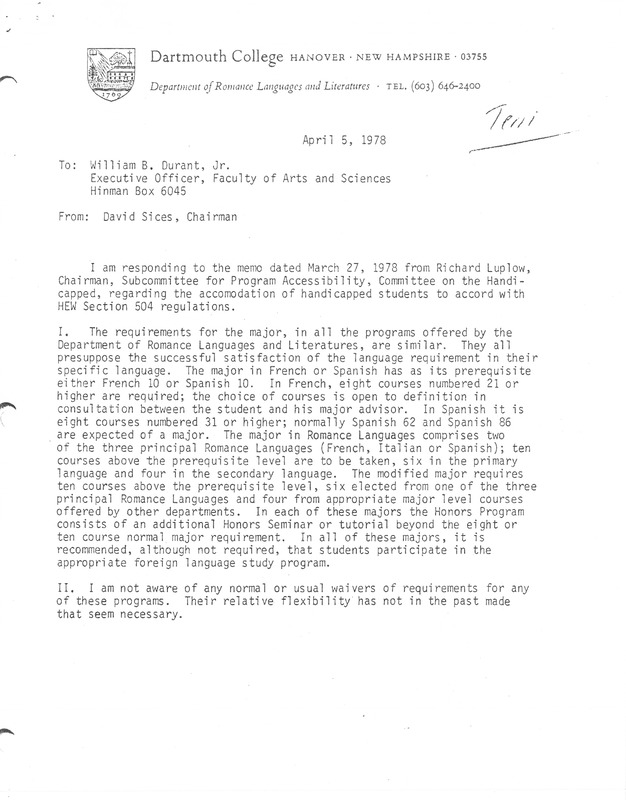
The official self-evaluation for the Department of Romance Languages and Literatures, in which the departmental chair comments on his disappointment that many buildings used by humanities departments are not being prioritized in accessibility renovations.
-

A staff member from the Reading and Study Skills Center (R&SS) describes the services and accomodations the department is prepared to offer disabled students in this self-evaluation. The self-assessment indicates that R&SS is unaccostomed to working with disabled students, and suggests that students with learning disabilities would not be likely to meet Dartmouth's academic requirements for admission.
-
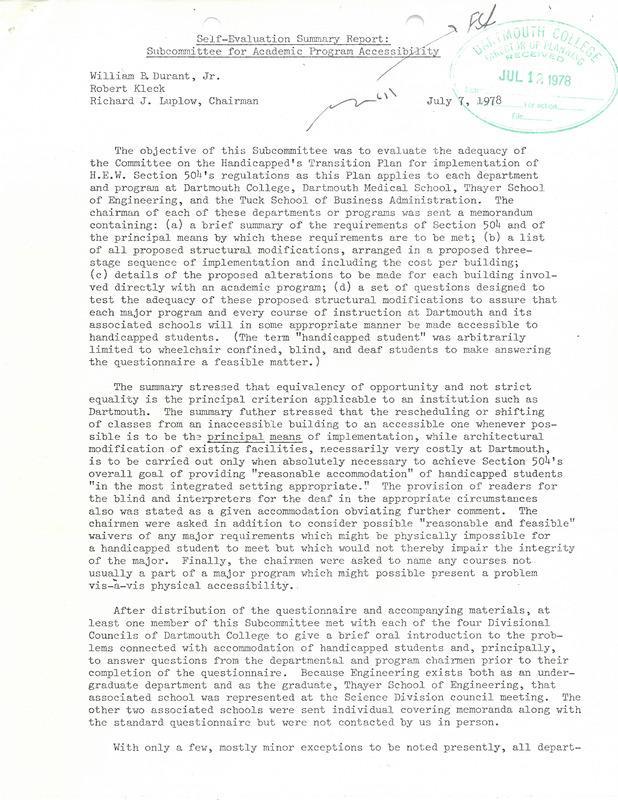
An internal report of all of the self-evaluations commissioned by the Subcommittee for Academic Program Accessibility.
-
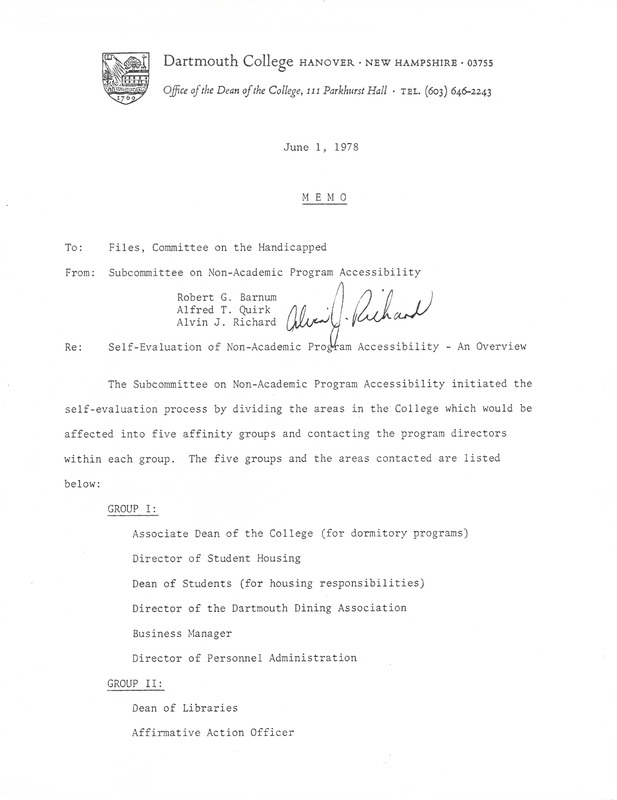
An internal report of all of the self-evaluations commissioned by the Subcommittee on Non-Academic Program Accessibility.
-
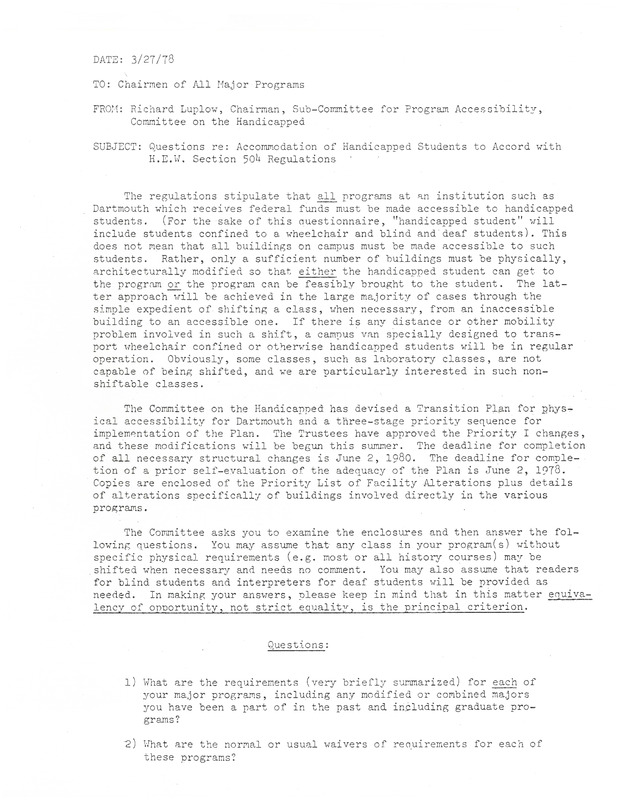
List of questions sent to Dartmouth academic and non-academic departments that informed their departmental self-evaluations for the Committee on the Handicapped. These self-evaluations were required to assure compliance with Section 504 of the Rehabilitation Act of 1973.
-

This memo from Richard Luplow quotes two individuals on improving attitudes towards the disabled. As one of the two members on Advisory Council on the Handicapped who used a wheelchair, it is possible that Luplow wanted to make his fellow committee members aware of different disabled experiences than just his own perspective.
-

An early incarnation of the Handicapped Accessibility Transition Plan, which includes a list of campus facilities, estimates of renovation costs, and very brief descriptions of the distinctions between Priority I, Priority II, and Priority III renovations.
-

Meeting minutes for the first meeting of the Advisory Council to the Handicapped (also known as the Committee on the Handicapped). Robert G. Barnum is appointed as the committee’s coordinator for campus programs and facilities. The meeting closes with the comment that the committee has room for a disabled student to provide perspective and insight.
-
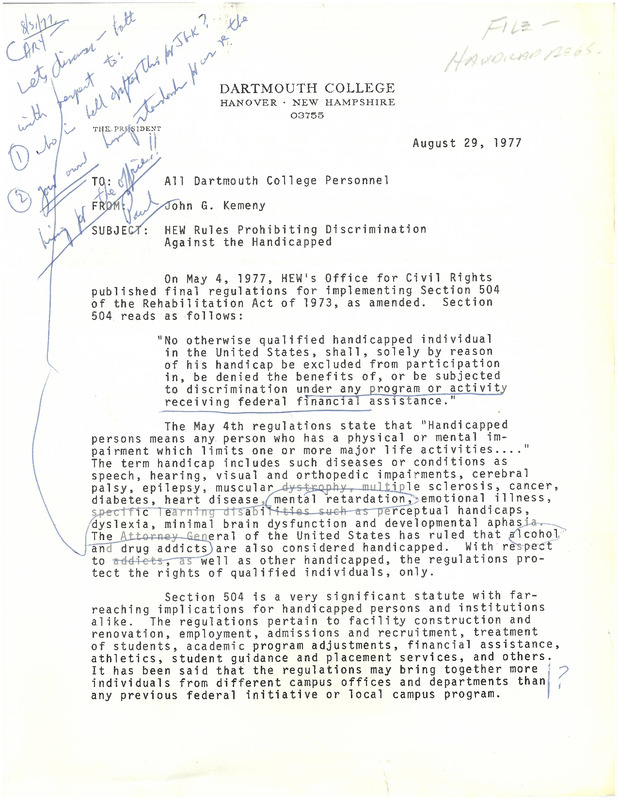
President John G. Kemeny writes to all members of the College to reiterate the College’s now official outlook on the Health, Education, and Welfare (HEW) regulations, a strong departure from the statement in a more private memo from August 30, 1976. Kemeny asserts that “It is not necessary to make structural changes in existing facilities when programs can be made accessible by other methods such as reassignment of classes or assignment of aides to handicapped individuals...” This letter, like many other documents that seek to sidestep equal access to all campus facilities, cites the age of the institution as the fundamental barrier to full compliance with HEW regulations.
-
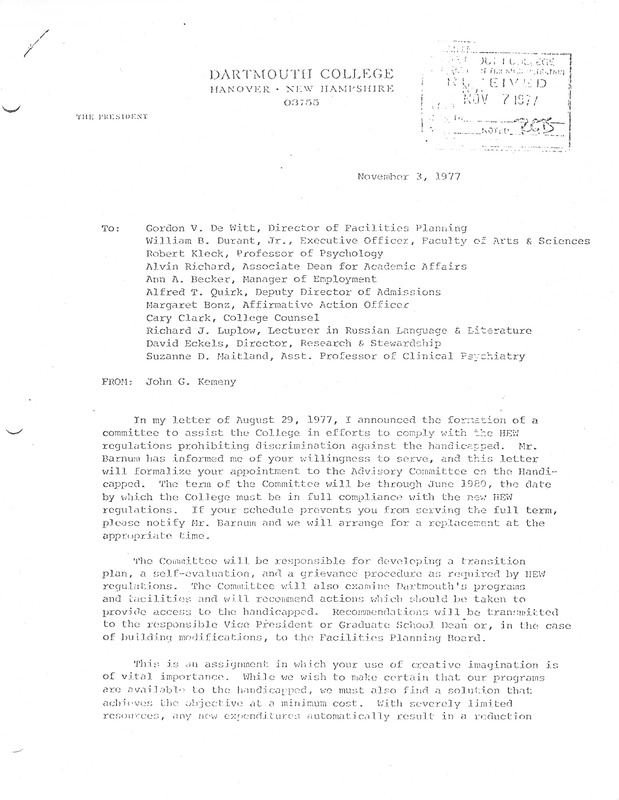
A memo sent to the appointed members of the Advisory Committee on the Handicapped that instructs the Committee to develop a transition plan, self-evaluation plan, and grievance procedure in line with Health, Education, and Welfare (HEW) regulations. President Kemeny makes note of the difficult task facing the Committee, and recommends thinking creatively in order to make accommodations at minimal cost. He also mentions that the College has accommodated handicapped students and employees in the past.
-
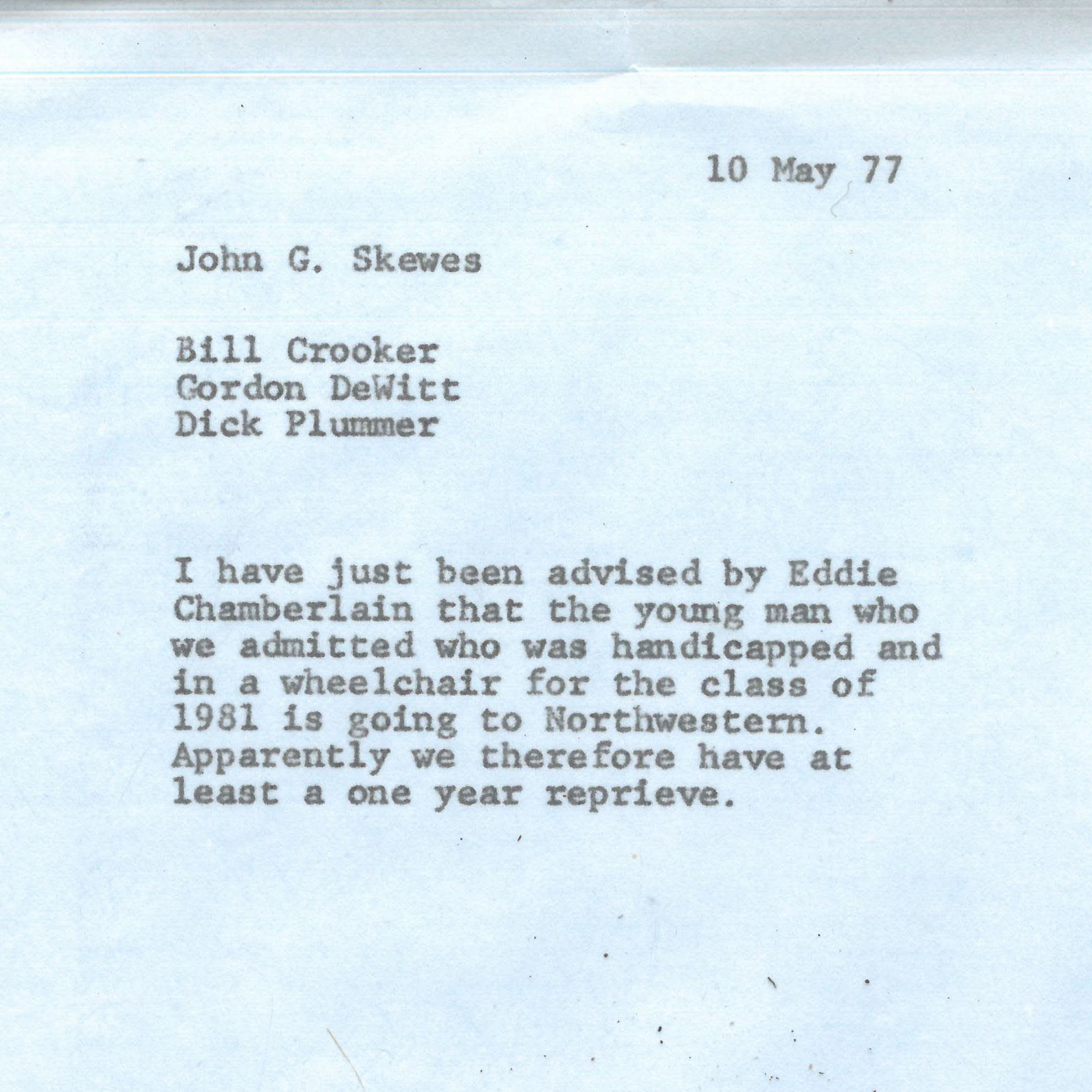
A memo expressing relief that a “young man who [Dartmouth] admitted who was handicapped and in a wheelchair for the class of 1981 is going to Northwestern.” The student's decision to attend college elsewhere is characterized as providing the College “at least a one year reprieve.”
-

An attachment to an August 18, 1976 memo from Sheldon Steinbach to the National Association of College and University Attorneys (NACUA) Affirmative Action Section. This letter is working discussion draft of the American Council on Education (ACE)’s letter to Mr. Martin Gerry, a lawyer in the Office for Civil Rights in the Department of Health, Education, and Welfare (HEW). Throughout most of the draft, ACE discusses its issues with the proposed legislation, including several objections to the foundation of equal access.
-
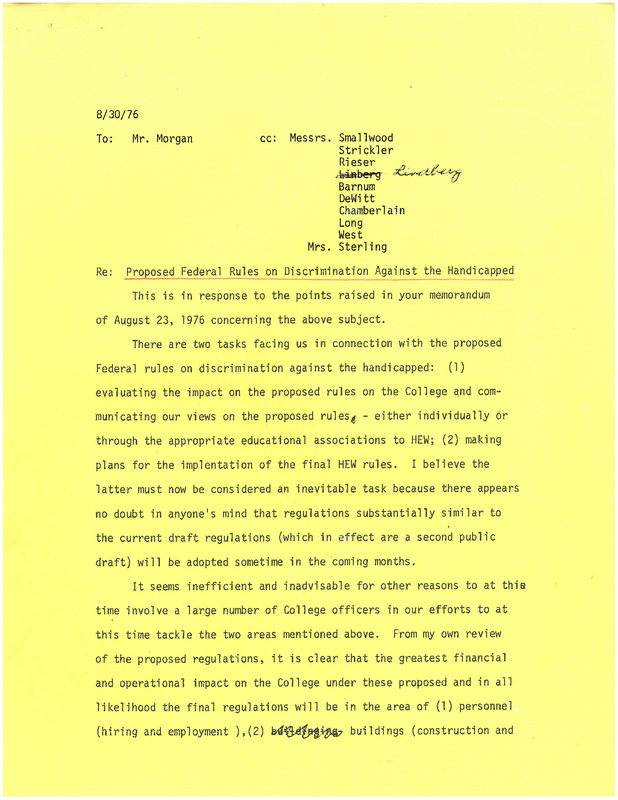
A memo outlining Dartmouth’s main responsibilities to ensure compliance with Section 504 of the Rehabilitation Act of 1973. The memo further explains the basis on which the American Council on Education (ACE) is challenging the legislation, and recommends that the College show its support for ACE’s criticisms.
-
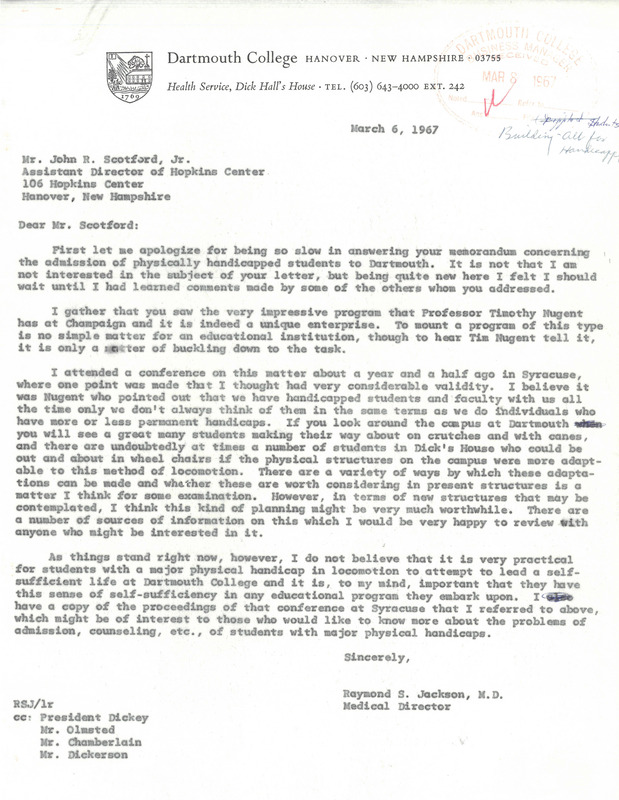
Memo from Dr. Raymond S. Jackson of Dick's House regarding a conference attended and his ensuing thoughts on the subject of physically handicapped students at Dartmouth. He declares adaptations to be worthy of advanced planning but notes he does not think students with disabilities can lead self-sufficient lives at Dartmouth.
-
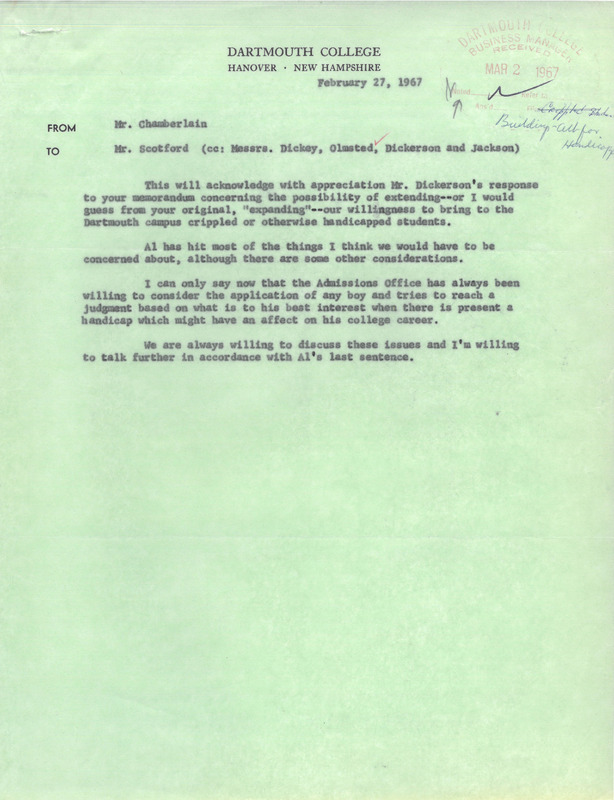
Admissions Officer Edward Chamberlain replies to Scotford’s memo and indicates that he mostly agrees with many of the points outlined in Al Dickerson’s earlier reply. Chamberlain does add that “the Admissions Office has always been willing to consider the application of any boy and tries to reach a judgment based on what is to his best interest when there is present a handicap which might have an affect on his college career.” Like Dickerson, he emphasizes his willingness to discuss things further with Scotford.
-
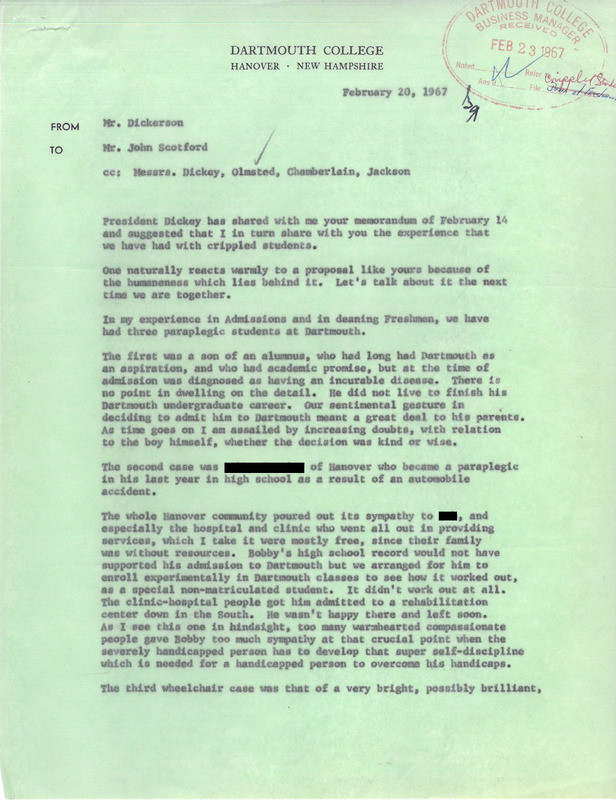
A memo sent on behalf of President Dickey, in which Dean of Freshman Al Dickerson provides information about the student wheelchair users he had seen in his twenty years working at the College.
-
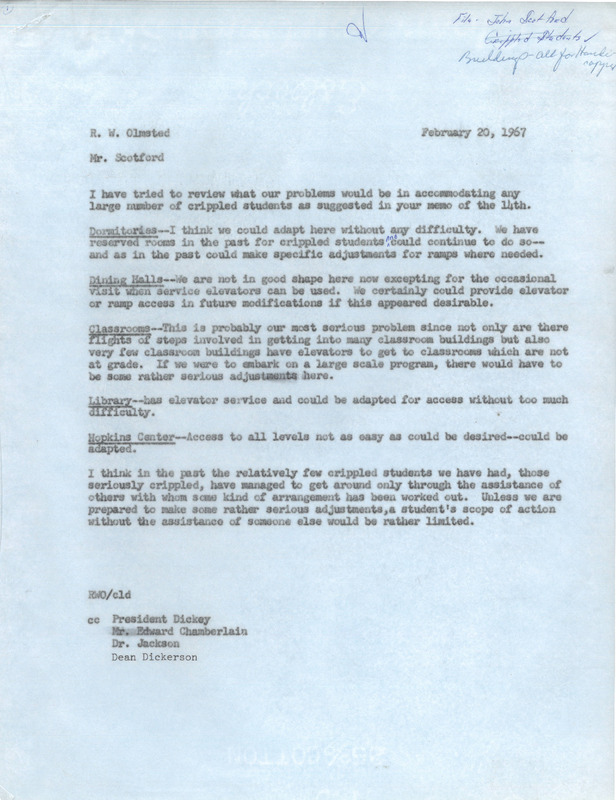
Business Manager Richard Olmsted's reply to John Scotford, in which he speaks to potential points of accommodation and existing accessibility problems for campus buildings, including dormitories, dining halls, classrooms, the library, and the Hopkins Center. The memo ends by noting that unless serious adjustments are made “a student’s scope of action without the assistance of someone else would be rather limited.”
-
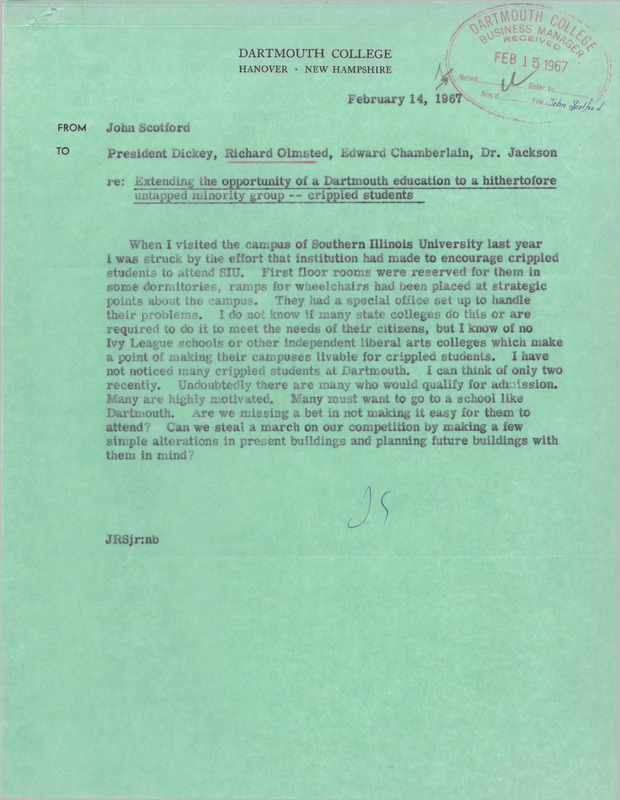
A memo from Hopkin's Center designer John Scotford regarding his visit to the campus of Southern Illinois University. He recounts certain accessibility features present and asks if alterations could be made to the Dartmouth campus in order to effectively recruit students with disabilities. Doing so is presented as a way to gain an edge over competing schools.


















